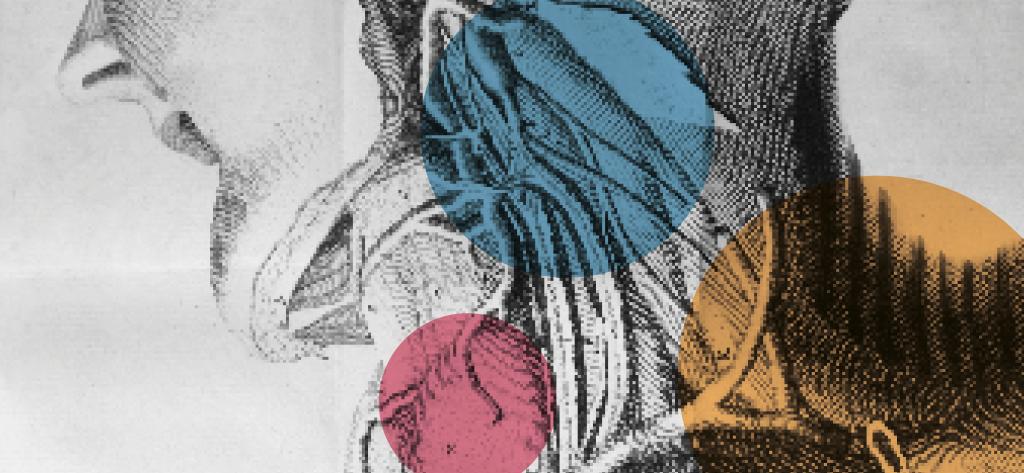
During the colonial period, the Jesuit Block had a pharmacy, a place dedicated to the production of medicines and the care of the sick. In those years, in the city of Córdoba, healing practices were carried out by various individuals: physicians of “science” or “experience”, surgeons, licensed practitioners, physicists, barbers, and others knowledgeable in medicine.
It was located in the southern sector, where the Paseo Córdoba de la Nueva Andalucía and the Colegio de Monserrat are currently situated. Even in that corner of the building, there was also a space dedicated to reading and knowledge. It had a small library, as can be verified through handwritten ownership inscriptions on the book covers. “It belongs to the Pharmacy” can be read on some copies.
The exhibition we present offers an approach to those books that provided context for colonial medical practice in the city. How was this knowledge shaped in this peripheral region of the Viceroyalty? How were concepts of healing, the body, and balance nurtured? How was the relationship between European and American medicine manifested?
The exhibition can be complemented with resources available on our website. Promoting free access to information, it provides high-quality photographs along with a catalog link for consulting each of the copies, some of which have been fully digitized.
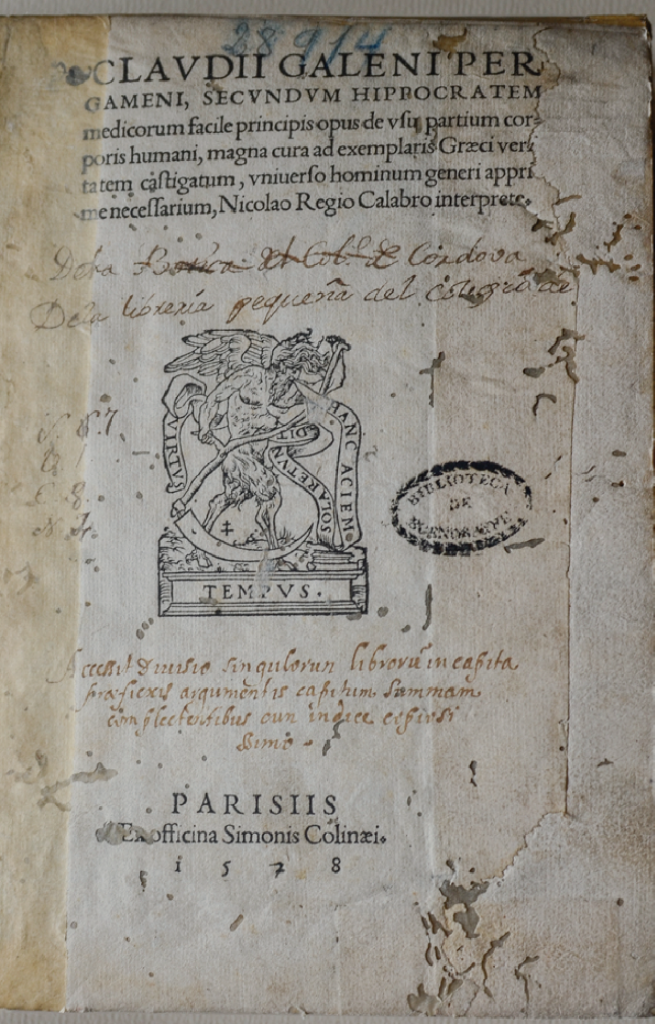
CUBE N°1
The ‘humoral theory’, formulated in ancient Greece by Hippocrates and upheld by Galen, was commonly used in colonial Córdoba. It proposed the existence of four substances or humors in the body: black bile, yellow bile, phlegm, and blood. The disruption of the balance between these humors was understood as the origin of disease.
The presence of Galen’s texts in the library of the Order’s Pharmacy attests to the influence of his therapeutic approach, even at a time when his views were beginning to be reexamined.
Title: “Pergameni, secundum Hippocratem medicorum facile principis opus de usu partium corporis humani: magna cura ad exemplaris Graeci veritatem castigatum, universo hominum genere apprime necessarium.”
Author: Claudius Galenus
Place and date of printing: Paris, France, 1528
Code: BN B 50
Find this book in our catalogue
CUBE N° 2
During the 16th and 17th centuries, the first universities in the Americas were established (whereas in Europe, universities had begun to be founded since the 13th century, such as those in Bologna, Montpellier, Padua, Paris, Oxford, and Cambridge). Within this context, anatomical amphitheaters promoted a focus on human dissection as a method of teaching and learning.
Medicine benefited from the contributions of great anatomists such as Dionisio Daza Chacón and Giovanni di Vigo, whose works were found in the old Pharmacy. The medical knowledge circulating in the city made no distinction between licensed practitioners, surgeons, and barbers, who shared the same discourse, similar healing methods, and common therapeutic spaces.
Title: “Práctica y Teoría de la Cirugía en romance y en latin”
Author: Dionisio Daza Chacón
Place and date of printing: Madrid, Spain, 1678
Code: BN B 253
Find this book in our catalogue
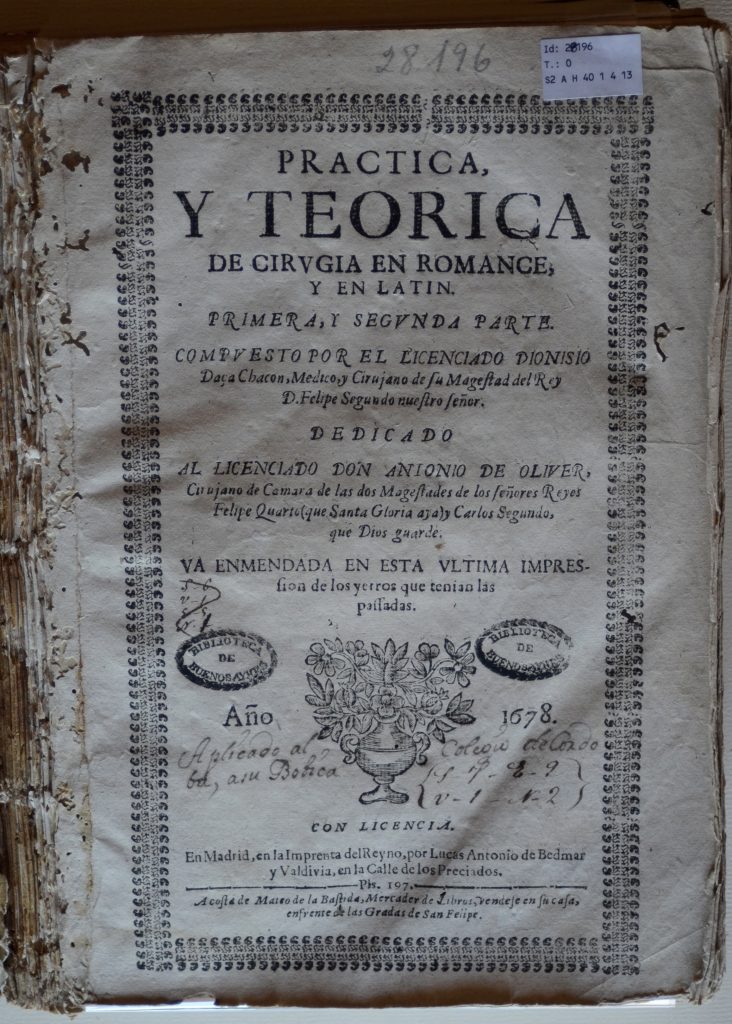
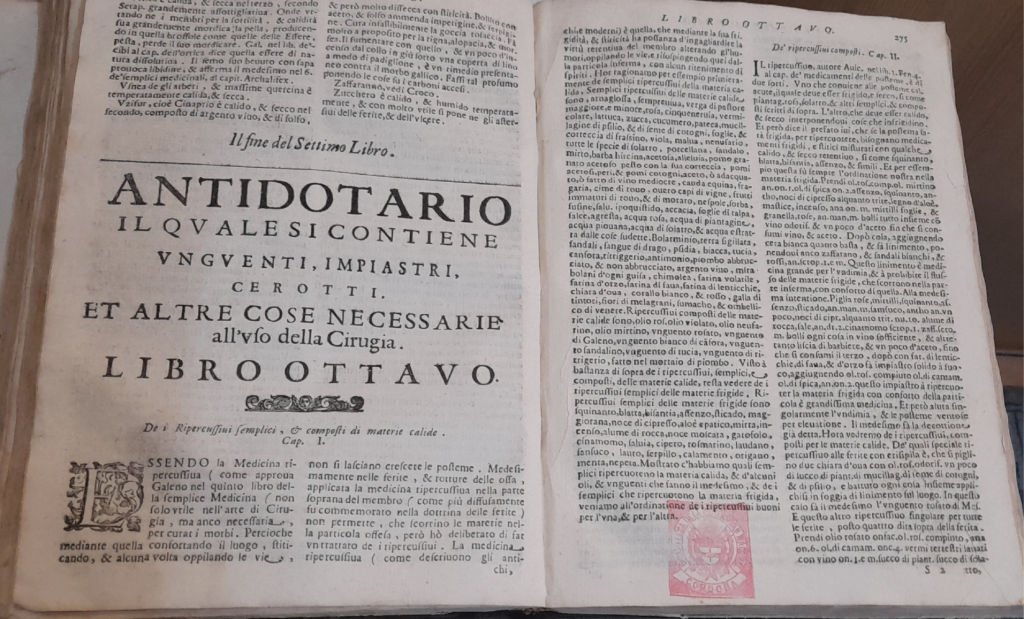
CUBE N° 3
The 15th and 16th centuries, the Renaissance period, enabled a revolution in European medicine. In this context, voyages to the Americas allowed for the discovery of new plants with medicinal purposes
The Italian physician Giovanni di Vigo gained recognition in his time with the publication of his treatises on anatomy and the use of various plants for the treatment of diseases and wounds.
The presence of his treatise in the Jesuit Pharmacy as a reference text may indicate his recognition during this period.
Title: “La prattica universale in cirugia”
Author: Giovanni di Vigo
Place and date of printing: Venice, Italy, 1669
Code: BJ B 438
Find this book in our catalogue
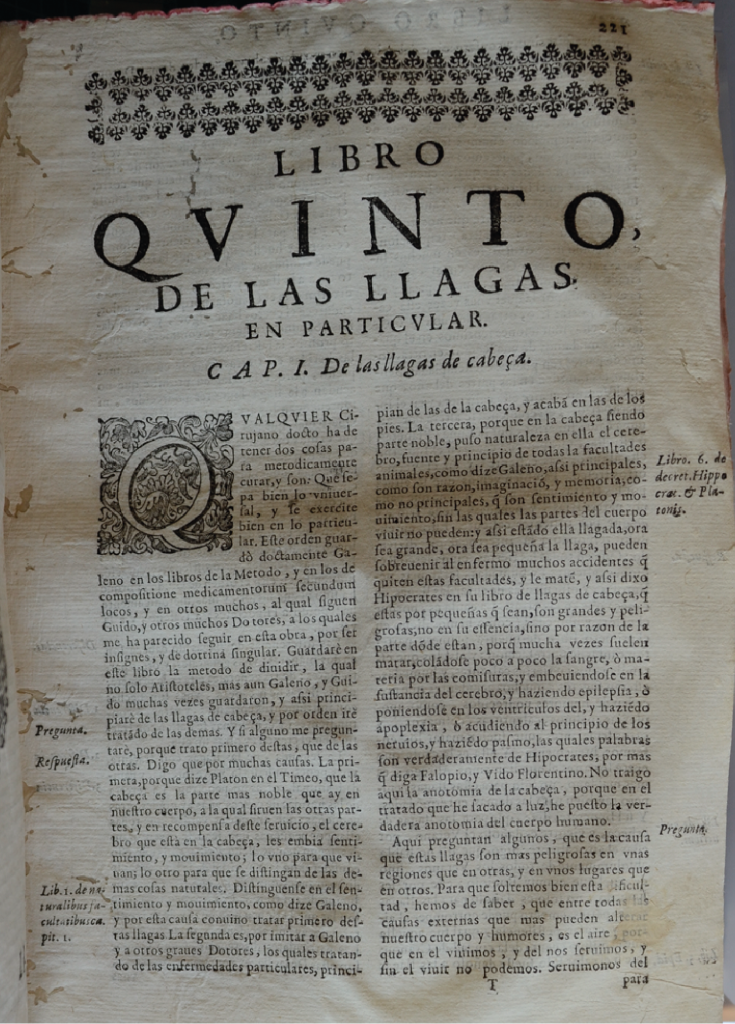
CUBE N° 4
Juan Calvo was a renowned Spanish author. His work stands midway between the ancient theories of Galen and the emerging perspectives of medical knowledge in the 15th and 16th centuries.
His publications contain didactic explanations on physiology, pathology, pharmacology, and anatomy. The multiple reprints of his works attest to his success and explain his presence in the Jesuit Library as a medical reference text.
Title: “Primera y segunda parte de la Cirugia uniuersal, y particular del cuerpo humano : que trata de las cosas naturales, no naturales, y preternaturales…”
Author: Juan Calvo
Place and date of printing: Lyon, France, 1647
Code: BJ B 438
Find this book in our catalogue
CUBE N° 5
During the Enlightenment, the advancements in medical knowledge initiated during the Renaissance continued. Albrecht von Haller, a notable Swiss physician and anatomist, conducted research and made significant contributions in the field of physiology—the discipline that studies the functioning of the body—by experimenting with animals.
Title: “Opuscula pathologica : partim recusa partim inedita: quibus sectiones cadaverum morbosorum … accedunt experimenta de respiratione quarta parte aucta”
Author: Albrecht von Haller
Place and date of printing: Lausana, Switzerland, 1755
Code: BJ A 227
Find this book in our catalogue
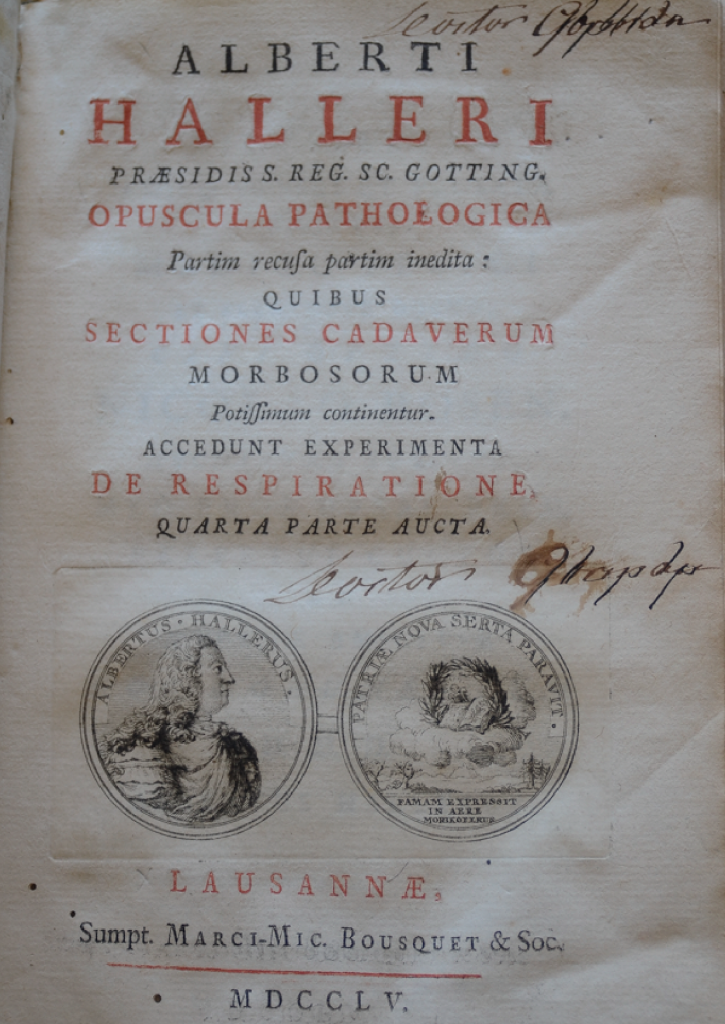
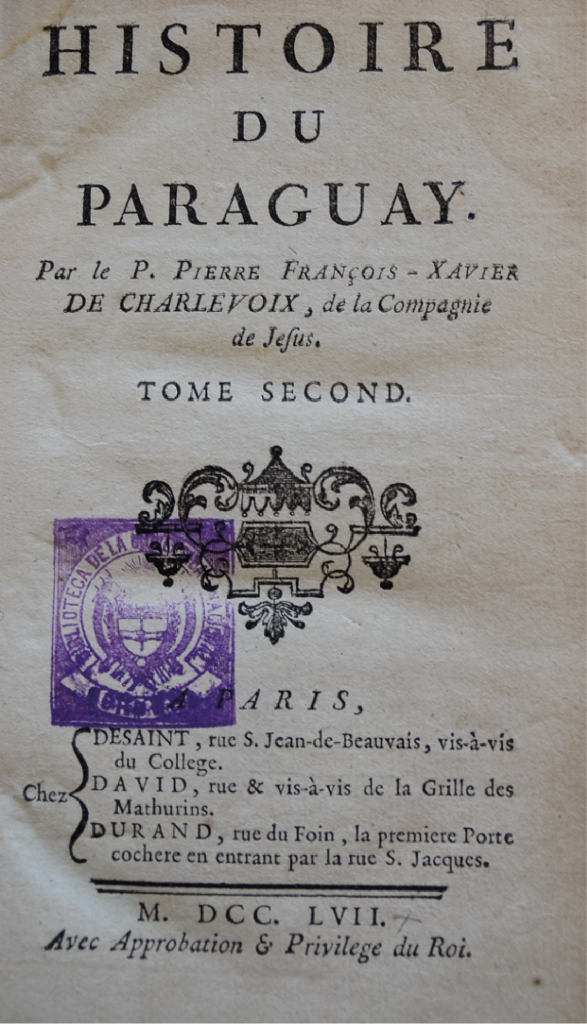
CUBE N°6
The indigenous peoples had their own medicine and surgery, and they provided this knowledge to Europe. Publications documenting the American flora, particularly those produced by the Jesuits, contributed to this body of knowledge/understanding.
Notable among these works are those of Francisco Javier de Charlevoix and José Sánchez Labrador, the latter contributing information on the uses and benefits of more than 400 plants.
Title: “Histoire du Paraguay” (Tomos I y II)
Author: Francisco de Charlevoix
Place and date of printing: Paris, France, 1757
Code: BJ A 1339 / 1340
Find this book in our catalogue
CUBE N°7
Pharmacy and medicine are inextricably linked, to the extent that the first physicians were herbalists. Pharmacy is both an ancestral and scientific knowledge that understands remedies and their essence.
Since ancient times and to this day, plants have been used for medicinal purposes. Consequently, the knowledge and systematization of the botanical world are closely intertwined with medical science.
Ulisse Aldrovandi was an Italian naturalist with significant contributions in botany, zoology, and geology.
Title: “Ulyssis Aldróvandi … Dendrologiae naturalis scilicet arborum historiae libri duo … / Ouidius Montalbanus … opus summo labore collegit, digessit, concinnauit …”
Author: Aldrovandi, Ulisse
Place and date of printing: Bologna, Italy, 1668
Code: BN C 450
Find this book in our catalogue
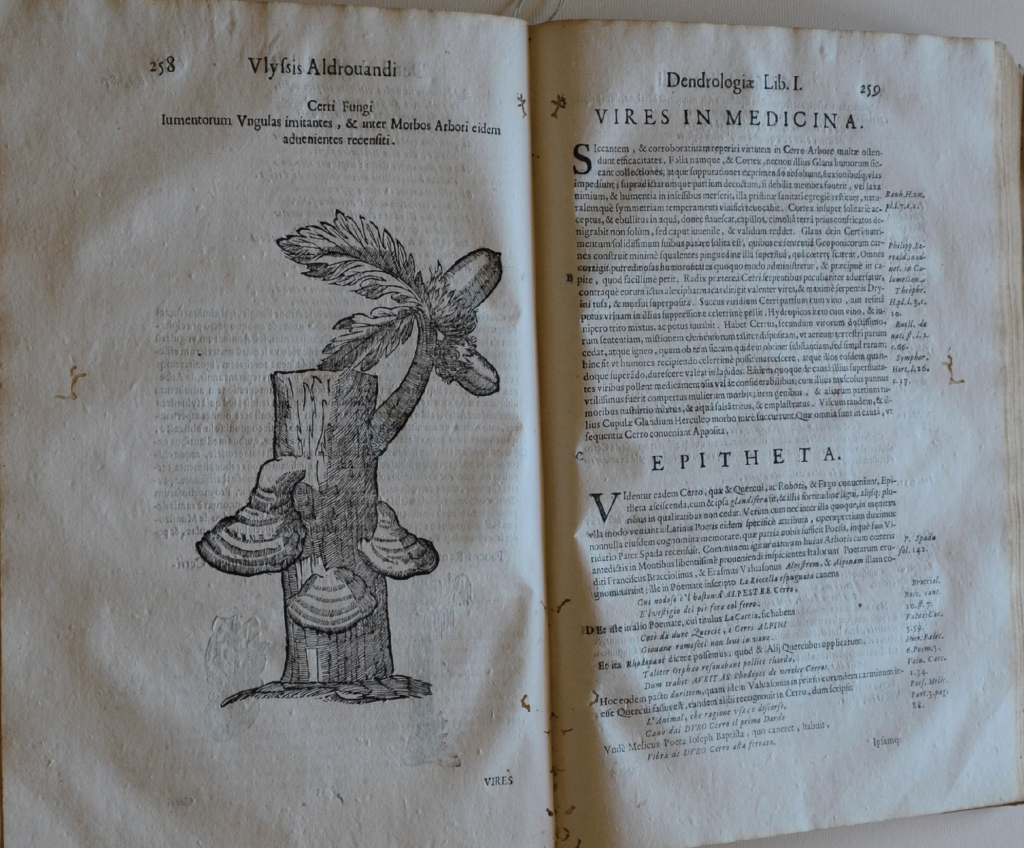
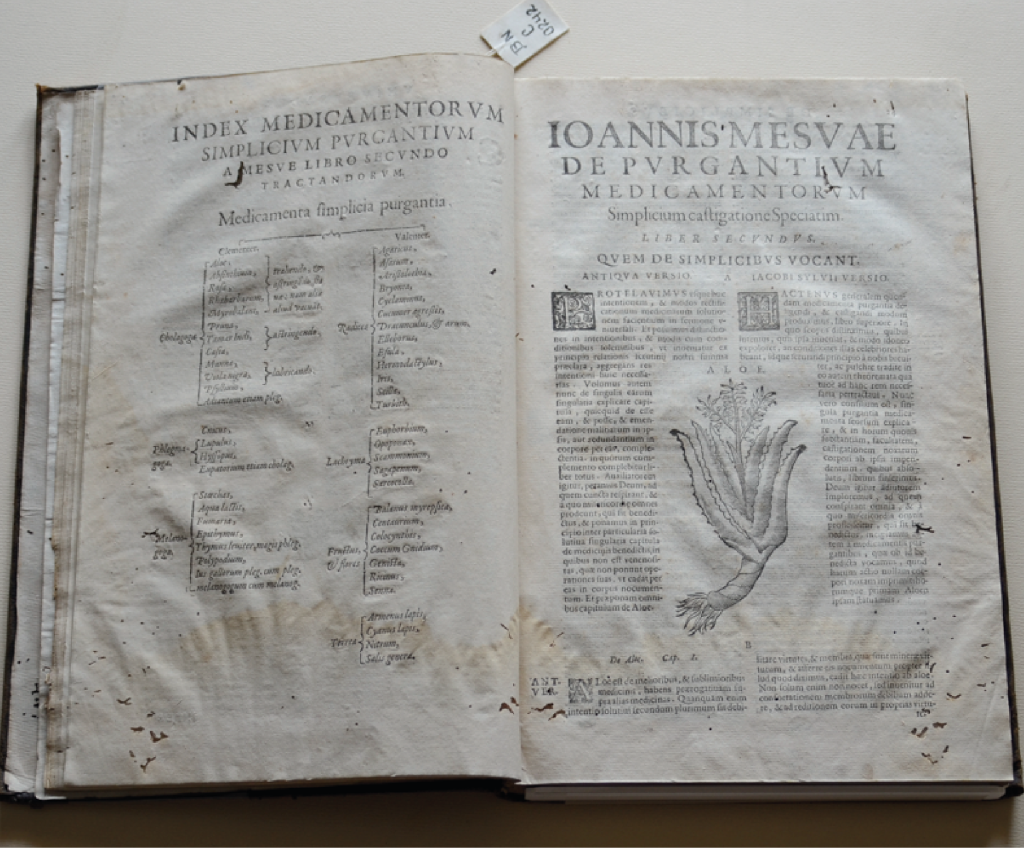
CUBE N°8
The Arabs wrote the first pharmacopoeias, preserving Greco-Roman knowledge while also enriching it with their natural resources, introducing syrups, preserves, distilled waters, and alcoholic liquids.
This work by Yuhanna Ibn-Massawaih, an Arab physician and professor of medicine in Baghdad, presents one of the most popular medicinal plants: Aloe vera, which has been used to treat burns and wounds.
Title: “Ioannis Mesuae … Opera de medicamentorum purgantium delectu, castigatione, & usu. Libri duo : Quorum priorem Canones universales, posteriorem de Simplicibus vocant. Grabadin, hoc”
Author: Yuhanna Ibn-Massawaih
Place and date of printing: Venice, Italy, 1623
Code: BN C 242
Find this book in our catalogue
CUBE N°9
Books on natural history, botany, recipes, and medicines, along with a garden of medicinal plants and elements such as glass, ceramic, and clay jars, as well as alembics, formed the setting where the Jesuits prepared remedies. These remedies were not only for the use of the Order but were also offered to the community through a window facing the street.
Title: “Rariorum stirpium historia…”
Author: Jacobo Zanonii
Place and date of printing: Bologna, Italy, 1742
Code: BJ C 910
Find this book in our catalogue
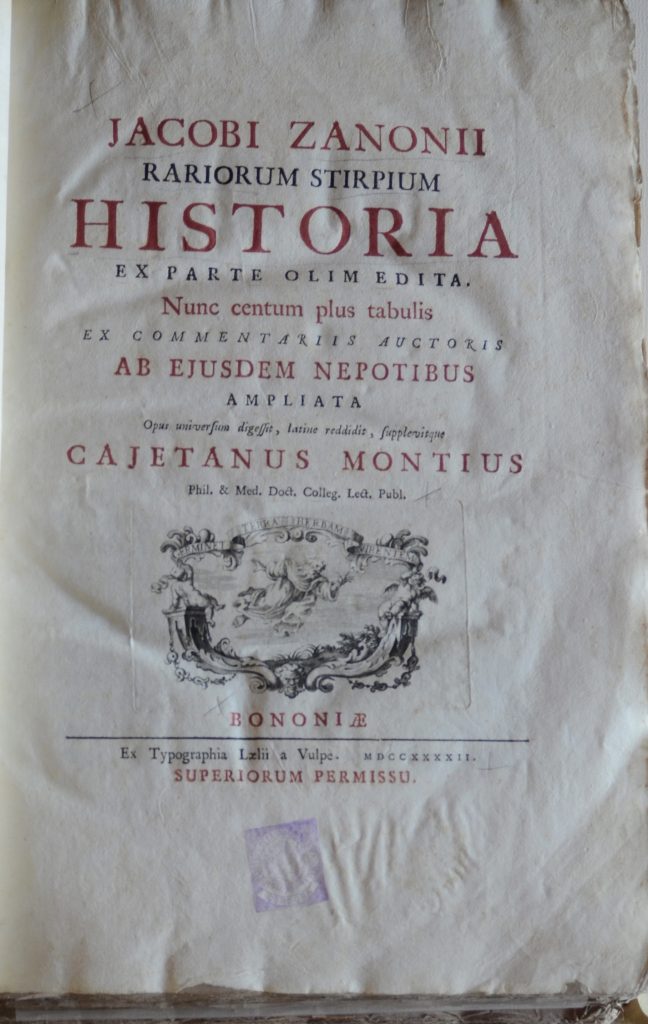
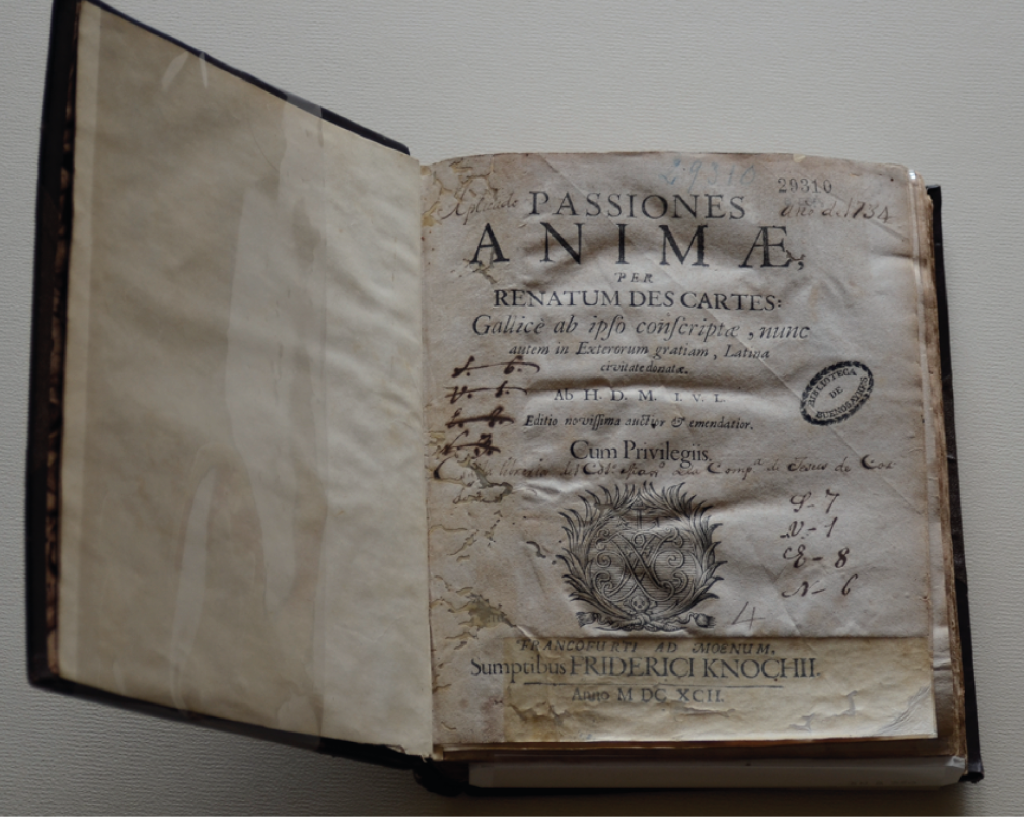
CUBE N°10
With the rationalism of René Descartes in France (from his work “Discourse on the Method”, published in the 17th century) and the empiricism of John Locke and David Hume in England (18th century), the first scientific revolution took place. From that point on, new conceptions of thought and science emerged, along with the development of the experimental method and the introduction of instruments in research.
This posthumous work by Descartes is a contribution to the history of medicine, as it presents an innovative and mechanistic view of the human body. Cutting-edge knowledge at the service of the Jesuit Pharmacy of Córdoba.
Title: “Tractatus de homine et de formatione foetus”
Author: René Descartes
Place and date of printing: Frankfurt, Germany, 1692
Code: BN B 350
Find this book in our catalogue
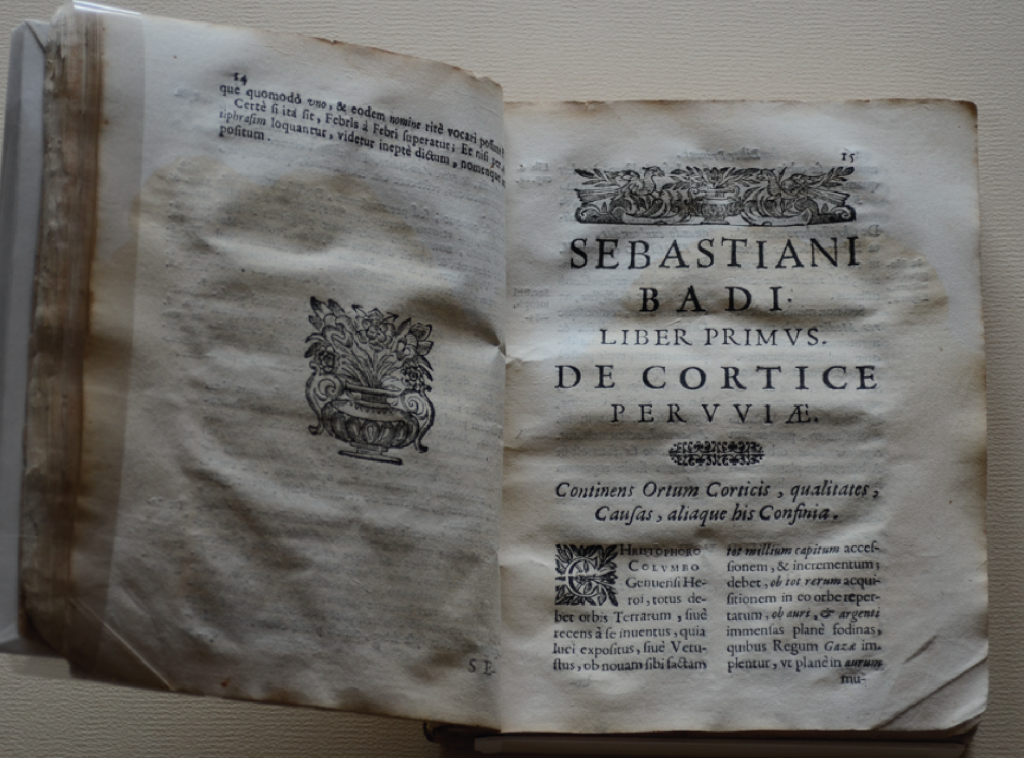
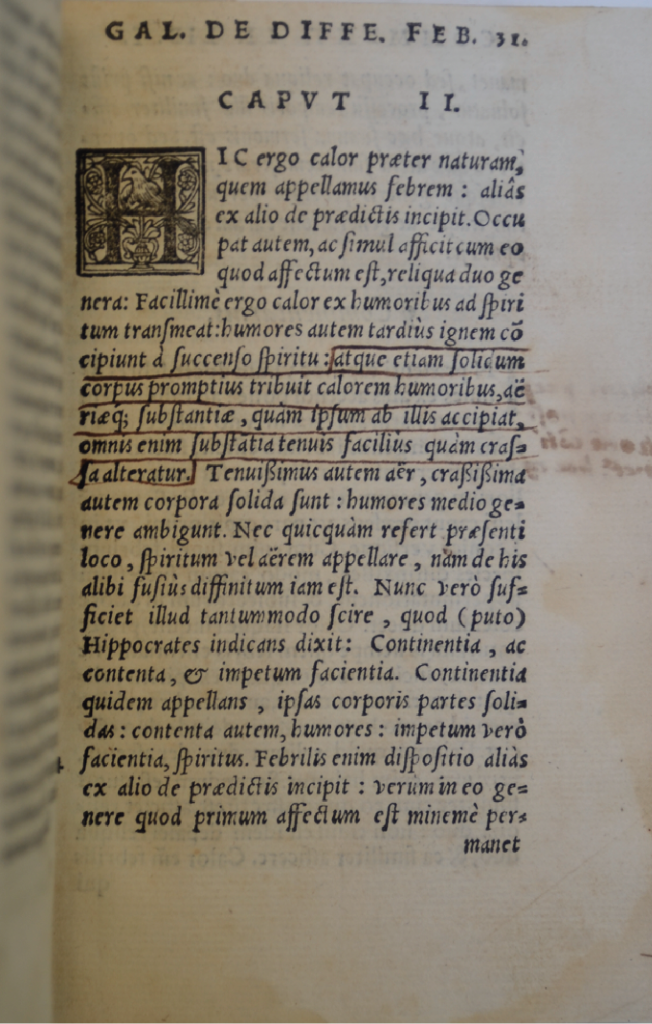
In colonial Córdoba, a peripheral region within the distribution of viceregal power, the knowledge of those dedicated to healing was not considered illegitimate or inauthentic, despite having different origins.
Quina, or cinchona, studied by Sebastián Bado in his work, originates from the subtropical Peruvian jungle. The Indigenous peoples called it quinquina, “the bark of all barks”. Its use represented a revolutionary contribution to the treatment of certain diseases, such as paludism and malaria.
The publications preserved by the Jesuits in the Pharmacy reflect scientific advancements, American contributions, and serve as a testament to the Order’s role in the city’s healthcare during that time.
Title: “In Chinam-Chinam : de cortice peruviae”
Author: Sebastián Bado
Place and date of printing: Genoa, Italy, 1663
Signatura: BJ A 981
Find this book in our catalogue
***
Title: “Com[m]entaria in librum Galeni de differentia febrium”
Author: Cristóbal de la Vega
Place and date of printing: Alcalá de Henares, Spain, 1553
Code: BJ A1491
Find this book in our catalogue
